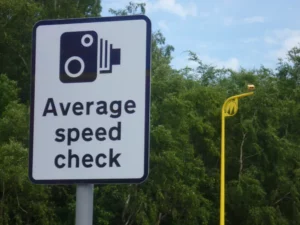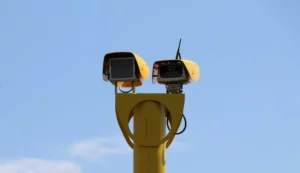Birmingham City Council has published its Clean Air Strategy for the city. The document sets out a clear set of actions, priorities and pledges that will enable everyone in the city to be part of the journey to improving the air we all breathe.
The strategy aims to encourage a greater understanding of the types of air pollution, its sources, greater collaboration between the Council and other significant stakeholders in the city and to embed key priorities around improving air quality into the Council’s decision-making processes.
The strategy includes several pledges that provide clear guidance around the role the Council will take in improving air quality in the city – including – collaboration with partners, clean air for schools, protecting the vulnerable, planning for the future. The pledges are:
- Improve the air quality monitoring at schools across the city
- Support businesses to encourage active travel amongst staff
- Actively participate in joint initiatives such as West Midlands Air Quality Improvement Programme, led by the University of Birmingham which seek to improve the understanding of pollution sources and levels of exposure
- Further development of the Birmingham Transport Plan encourage more people to adopt more active modes of transport in order to improve air quality and everyone’s health
- Enhanced capability and capacity around the capture and sharing of air quality data from the across the city
Councillor Waseem Zaffar MBE, Cabinet Member for Transport and Environment at Birmingham City Council has said:“There is clear evidence that air pollution can have long and short-term health implications. Our ambition is to create an environment where people can live and work to their full potential without the threat of this entirely preventable pollution.
“This strategy outlines our commitment to work towards this goal. The launch of the Clean Air Zone was just the beginning of our journey to a greener future for the city and our communities. It is a promising next step for us today to be able to launch the Air Pollution Sensors project with Airly as this will help us create further awareness across our communities of how the air pollution situation is progressing.
“I am grateful to the public for providing their feedback during the consultation to help shape this strategy and for their continued support as this important work develops. Now it is time for us all to think about changes we can make to create a difference, as individuals and as organisations.”
The strategy was launched today, Thursday 27 January 2022 at Lea Forest Primary School, one of the 70 schools receiving an air pollution sensor, in the first tranche of schools. This initiative is being run in partnership with Airly and will involve air pollution sensors being installed at schools across the city. The data from these sensors will be used to help educate and engage schools and communities about air pollution levels at a local level.
Craig Clarke-Castello, Headteacher at Lea Forest Primary Academy has added: “Our children deserve the best opportunities now and throughout their life. We are carefully considering the educational experience we provide to enable them to live long and healthy lives, empowering them to slow the critical damage to our environment and promote its recovery.
Through closely working with our local community, Modeshift Stars, Bikeability, Living Streets Travel Tracker, Cleaner Greener Streets, The Queen’s Green Canopy and other initiatives, we strive to educate our children about how to care for the environment in our local neighbourhood. To do this safely we must ensure we are doing everything possible to promote the best possible air quality, which we can now monitor using the new technology we have in school.
At Lea Forest, we are proud to be at the forefront of creating a healthier and more sustainable future for generations to come, and are working hard to support our community to make informed decisions on travelling around our city, the use and disposal of resources and any others effects we are having on our local, national and global environments.”
Based on data from the Council’s annual air quality status report tackling pollutants such as Nitrogen Dioxide and Particulate Matter remain top priorities. The sources of these pollutants include road traffic, wood burners, diesel generators, gas boilers, bonfires and fireworks. And they all contribute to atmospheric pollution, which we breathe every day and can have a significant negative impact on health.
Wiktor Warchałowski CEO of Airly has added: “We’re incredibly proud to partner with Birmingham City Council to provide them with hyperlocal, real-time air quality sensors for schools. Our comprehensive air quality platform will enable them to make intelligent, data-driven decisions based on the insights gained from our platform. Airly will also provide support to the Council to help reduce emissions, raise awareness and protect public health wherever possible.
“We’re inspired to see Birmingham City lead the way with a bold and exciting Clean Air Strategy and one that we’re confident will improve the environmental conditions for residents across the city.”
The Clean Air Strategy outlines five simple priorities that can be used for decision making, anything from a work from home policy to a highways scheme. And this isn’t restricted to just the council, anyone who is making a decision could use these priorities, even the journalists that are reading this press release. What’s more, by adopting these priorities you will not only be helping air quality, you will also help reduce your carbon footprint.
Improving the fleet: Discouraging the most polluting vehicles (private and public) from our city will lead to an overall reduction in air pollution. How can we support this change?
Improving the flow: Smoother and faster journeys that help reduce congestion will help reduce emissions [this applies to active travel routes, public transport as well as private vehicles]. Traffic congestion creates a bubble of air pollution with idling vehicles wasting fuel, wasting money and generating unnecessary carbon emission. How can we improve the flow of journeys?
Reduce the volume: Fewer vehicles = less pollution. By moving from private car use to walking, cycling, public transport or working from home can all reduce the number of vehicles on our streets. How can we support this change?
Reduce Sources & Exposure: By reducing the sources of air pollution and our exposure to poor air quality, we reduce the likelihood of poor health and damage to the environment. We should limit the sources of air pollution and our exposure where we work, travel, live, play or study, especially for the most vulnerable. How can we reduce the sources of air pollution and our exposure?
Empowering Behaviour Change: To encourage and support individual behaviour change to improve air quality by embedding into our culture (businesses, organisations, local communities, the council etc) the policies, guidance and capability to be less polluting. How can you and/or your organisation empower an individual to pollute less?
The strategy arrives at a critical time after research has shown that pushing back on action to combat air pollution in the city, that impacts people’s health, will help reduce the financial pressure on the NHS and the economy. It will also reduce our carbon footprint.






















